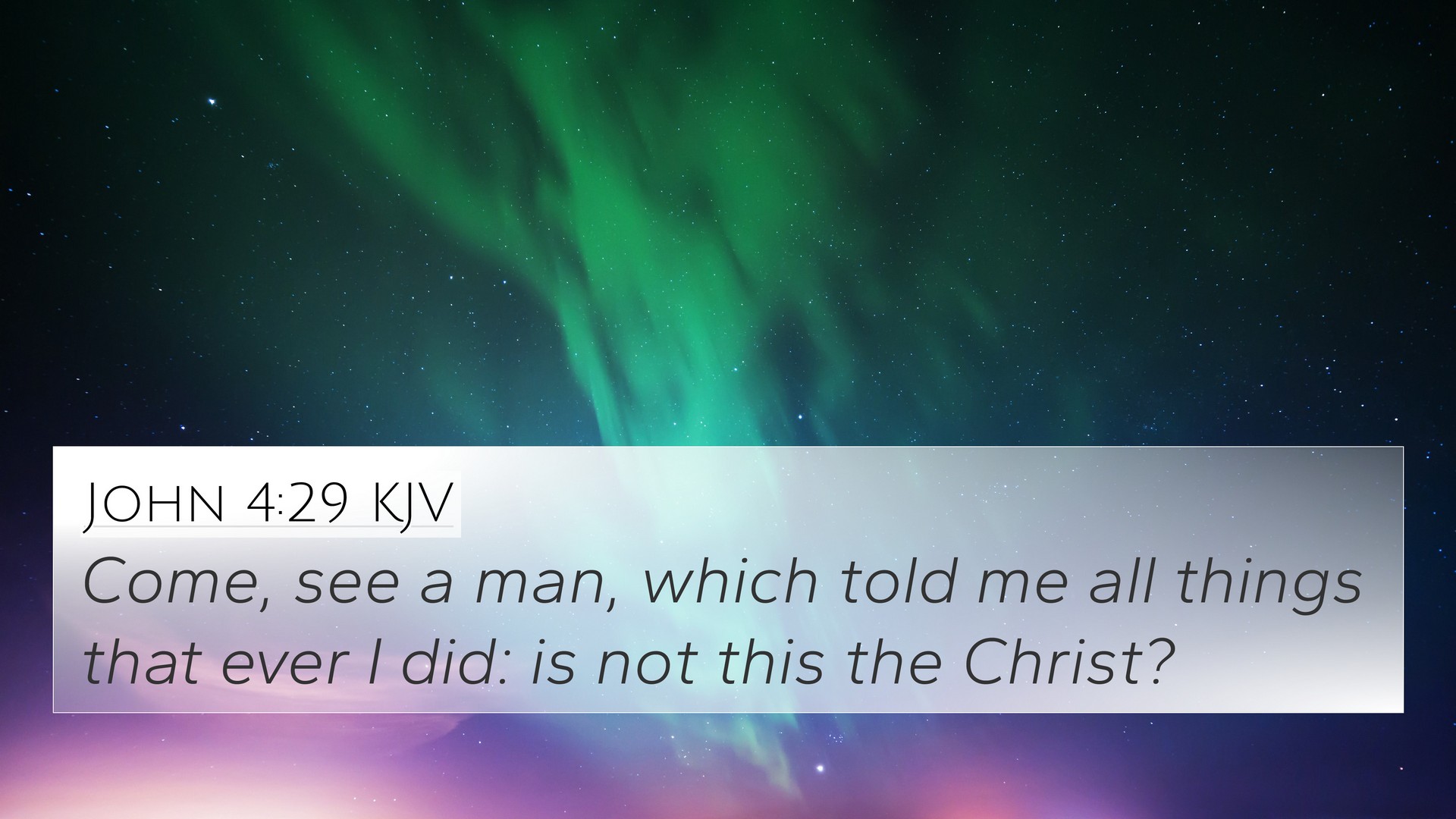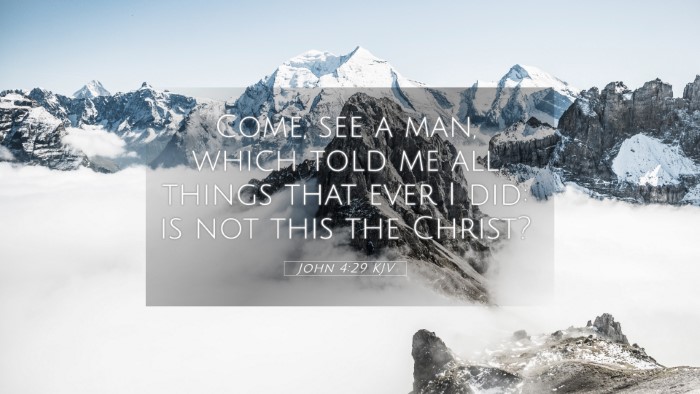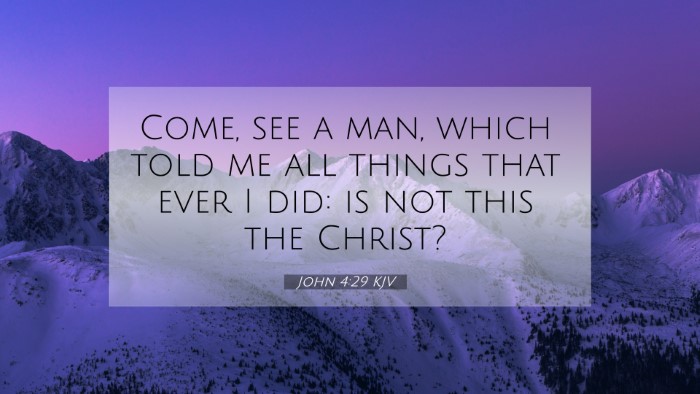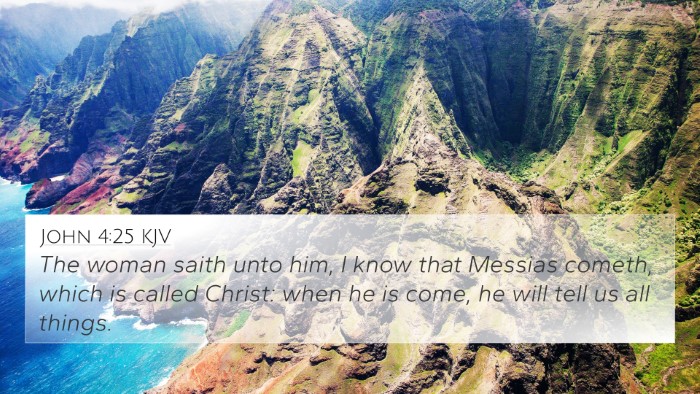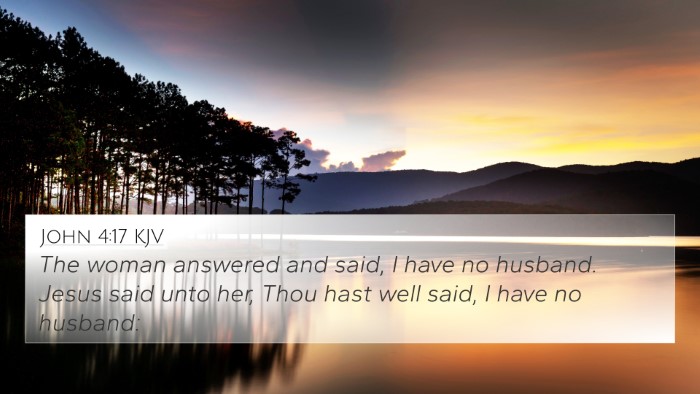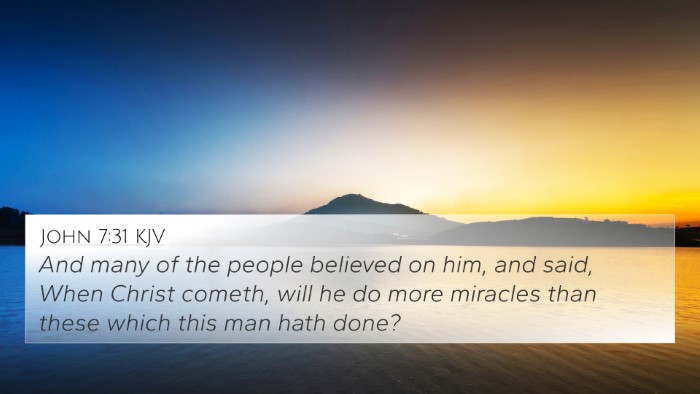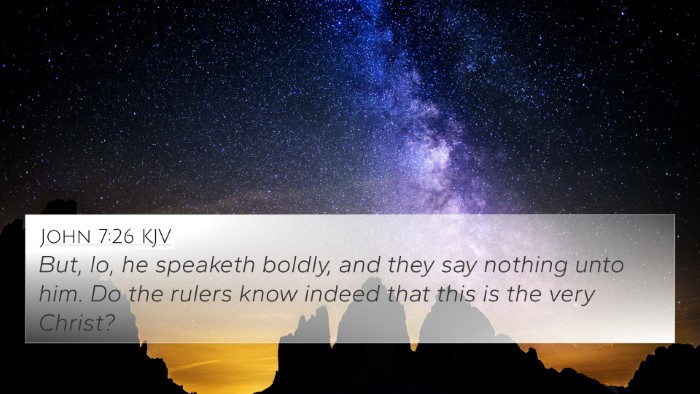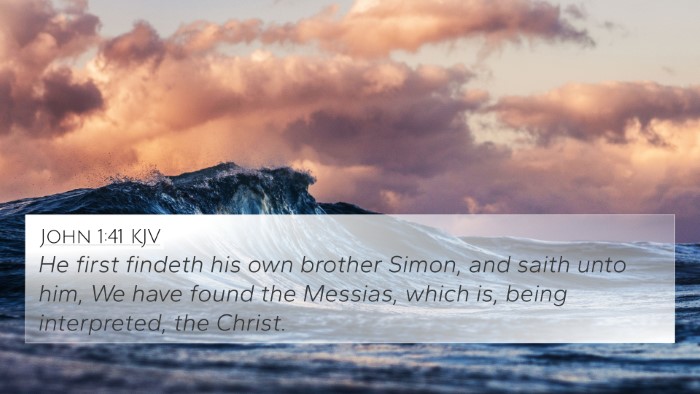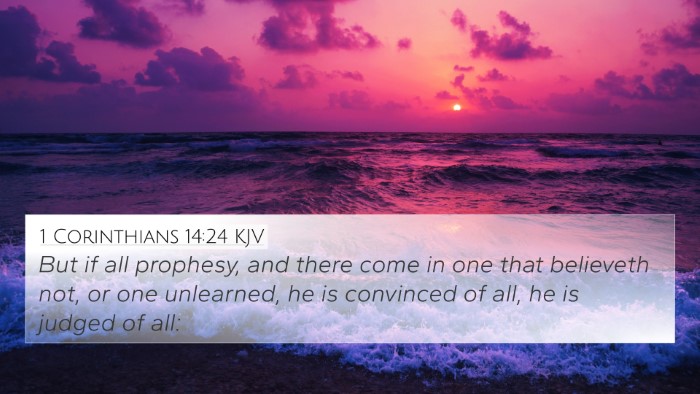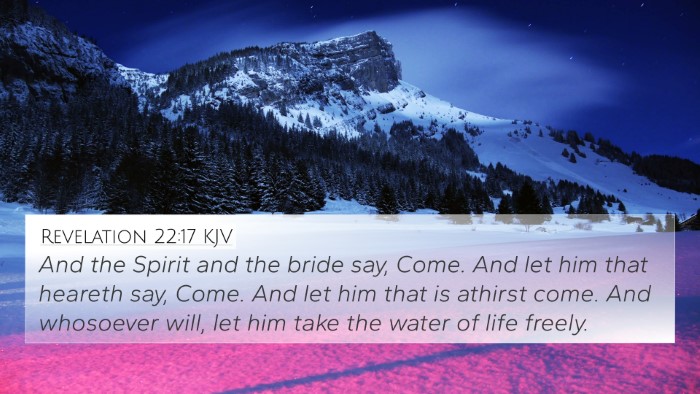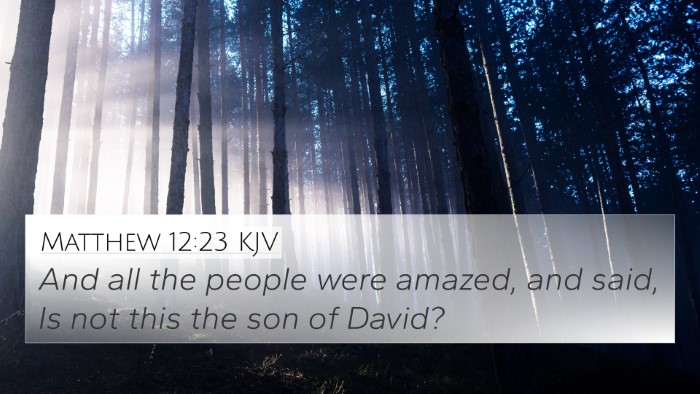Understanding John 4:29
In the verse John 4:29, the Samaritan woman proclaims, "Come, see a man which told me all things that ever I did: is not this the Christ?" This statement is not just an invitation; it encapsulates a profound transformation and revelation experienced by the woman and points towards the divine nature of Jesus.
Summary of the Verse
This verse occurs in the context of Jesus' encounter with the Samaritan woman at the well. After their conversation, she recognizes Jesus as the Messiah and eagerly shares her discovery with her community. This passage highlights the immediate impact of personal revelation and faith, emphasizing the transformative power of encountering Christ.
Insight from Commentaries
-
Matthew Henry:
Henry points out that the woman's eagerness to share her discovery shows a vital response to divine revelation. Her transformation from a marginalized figure to a witness of Christ signifies the inclusive nature of Jesus' ministry.
-
Albert Barnes:
Barnes emphasizes the significance of the woman's declaration as it encapsulates both personal testimony and a communal invitation. The act of calling others to witness Jesus mirrors the essential Christian calling to evangelize.
-
Adam Clarke:
Clarke notes the rhetorical question at the end of the verse. It serves to provoke thought among her listeners, urging them to reflect on their own beliefs about Christ. Clarke highlights the woman's confidence in her testimony as a powerful witness.
Key Themes in John 4:29
- Transformation: The change from disbelief to recognition of Christ as the Messiah.
- Evangelism: The woman's proactive approach in sharing her experience with others.
- Community Impact: The potential influence one person’s testimony can have on a community.
Cross-References to John 4:29
When exploring connections with other Bible verses, we see several related principles and themes:
- John 1:46: "Nazareth! Can anything good come from there?" This passage echoes the skepticism faced by Jesus and serves as a backdrop for understanding the woman's shift from doubt to proclamation.
- Matthew 28:19-20: The Great Commission emphasizes the call to discipleship and spreading the message of Jesus, akin to the woman's role in her community.
- Acts 1:8: "But you will receive power when the Holy Spirit comes on you; and you will be my witnesses..." This verse captures the essence of witnessing, much like the Samaritan woman.
- Romans 10:14: "How then will they call on him in whom they have not believed? And how are they to believe in him of whom they have never heard?" This verse underlines the need for personal testimonies in presenting faith.
- 1 Peter 2:9: This verse speaks about declaring the praises of Him who called you out of darkness into His light, paralleling the woman's journey.
- Luke 19:10: "For the Son of Man came to seek and to save the lost." This highlights Jesus' mission, which the woman now embodies.
- Matthew 5:14: "You are the light of the world." The woman's witness reflects the essence of being a light to others through her encounter with Christ.
Exploring Connections between Bible Verses
There are extensive connections to consider when studying not just John 4:29 but the Gospels as a whole. The Samaritan woman's declaration reflects a common theme seen throughout Scripture: the call to recognize and proclaim the truth about God.
- Linking Biblical Texts: John's Gospel frequently highlights the theme of witnessing, as seen in John 3:11 where Nicodemus also engages in dialogue and expressions of belief.
- Thematic Bible Verse Connections: The themes of revelation and testimony in John 4 resonate with ideas found in the Prophets, particularly regarding the outpouring of God’s spirit on all people (Joel 2:28).
- Scriptural Cross-Referencing: Finding verses that connect Old Testament prophecies with New Testament fulfillments is vital. Isaiah 53:5, which speaks of the suffering servant, complements the recognition of Christ as the expected Messiah.
- Comparative Bible Verse Analysis: Examining parallel accounts of the woman at the well in literary and thematic contexts can yield deeper understanding, such as comparing to the healing of the blind man in John 9, who also proclaimed Jesus’ miraculous works.
Tools for Bible Cross-Referencing
To explore these themes further, one can employ various tools for Bible cross-referencing:
- Bible concordance for keyword searches.
- Cross-reference Bible study guides to deepen understanding of specific verses.
- Using a Bible cross-reference system to identify themes across Scripture.
- Employing comprehensive Bible cross-reference materials for in-depth analysis.
User Intent and Discovery
For those searching how John 4:29 connects with other verses, it provides a unique opportunity to explore the narrative of faith:
- Similarities between John 4:29 and other verses: Understanding parallels and thematic resonance is essential for a deeper grasp of Biblical doctrine.
- What verses are related to John 4:29? Exploring related verses enriches comprehension of the message and invites continued inquiry into the nature of Christ.
- What Bible verses support the message of John 4:29? Many passages reinforce the theme of personal testimony and the transformative knowledge of Jesus.
Conclusion
John 4:29 serves as a profound reminder of the power of personal testimony and the call to invite others to discover Christ. As we explore cross-references and connections, we recognize the multifaceted layers of meaning within scripture, guiding us toward deeper understanding and application in our lives.
